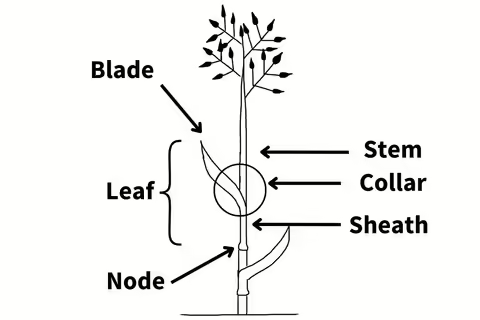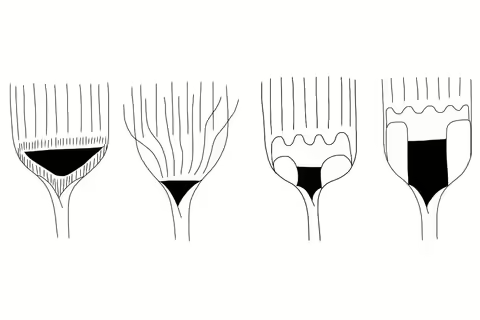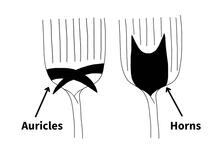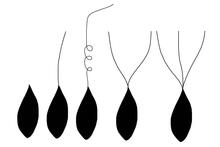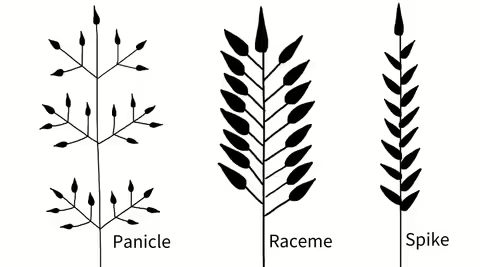Grass Identification
Which grass is which?
Plant identification can be challenging, especially plant identification of grasses. Land managers, farmers, naturalists, and gardeners want to know which grass is which so you can manage undesirable grasses and promote desirable ones. Illinois Extension can help you learn which grasses have wildlife or forage benefits, are potentially harmful if left untreated, and if they need to take action.
Let's start with the basics.
To identify grasses, there are some terms you should be familiar with. We can divide them into vegetative and flowering characteristics. Keep this handy grass identification guide handy.
Vegetative Characteristics
Stems
The vegetative portion of the grass consists of the stem, also known as the culm. The stem is the main backbone of the grass. Stems can be smooth or hairy, and sometimes they can have a whitish powder on them, making them glaucous.
Leaves
Grasses have leaves, but what you may think of as a traditional leaf is just one part of a grass leaf. Grass leaves include the blade, which is what we typically call a leaf, a sheath, which is a continuation of the leaf blade that wraps around the stem, and a node, which is a swelling that looks like a joint, and is located at the base of a leaf sheath. Leaf sheaths can be wrapped tightly around the stem and overlap, or they can be "open," appearing to not wrap completely around the stem.
Collar
The region where the leaf blade becomes the sheath is known as the collar region. This is a great first place to look when identifying a grass, because oftentimes there are structures located here that serve as key identification features when telling one grass apart from another. These structures include ligules, auricles, and horns.
Ligule
Within the collar region of many grasses is a structure called a ligule. A ligule can either be a membrane or hairs located in the juncture where the leaf blade becomes the sheath. The presence or absence of a ligule, and the type of ligule present are both excellent clues when identifying a grass. Hairs can be short, stiff, and numerous, or they can be long and sparse; membranous ligules can be short or rather tall - they are typically white when the grass is young, but turn orange, yellow, or brown as the season progresses. To see the ligule, simply pull the leaf blade gently away from the stem, and look closely at the collar region.
Auricles
Auricles are extra leafy material found at the base of leaf blades that look like arms, and hug, or wrap around the stem. As you pull back the leaf blade to look at the ligule, you will see the auricles open and unwrap.
Horns
Horns are stiff, u-shaped plant material in the collar region.
Flowering Characteristics
The flowering head of a grass is called the inflorescence. Here, the stem becomes the rachis, which is the main axis of the inflorescence. The rachis can be branched or unbranched.
The flowering unit of a grass is called a spikelet - this is where the grass flowers develop and then form seeds. Spikelets can be directly attached to the rachis, or they can be held on stalks called pedicels.
Spikelets of grasses can have structures called awns or bristles, which can serve as identifying features. An awn is a bristle-like extension of the spikelet that emerges from the tip of the spikelet. Awns can take many shapes and sizes, as seen in the sketch below.
Bristles are external structures that surround the base of a spikelet, but do not emerge from the spikelet itself. You can remove the bristles from the spikelet while keeping the spikelet intact.
Inflorescences
There are three main types of inflorescences, and being able to identify which type of inflorescence you have can help you narrow down what type of grass you are looking at.
Ask a few simple questions:
Does the rachis branch?
- Yes: The inflorescence is a panicle. A panicle is an inflorescence that has a branched rachis. The spikelets can either be held on pedicels or be directly attached to the branches.
- No: If we have an unbranched rachis, we move to the next question.
Are the spikelets held on pedicels or directly attached to the rachis?
- Spikelets directly attached to the rachis: The inflorescence is a spike. A spike is an inflorescence that has an unbranched rachis with spikelets directly attached to the rachis.
- Spikelets held on pedicels: The inflorescence is a raceme. A raceme is an inflorescence with an unbranched rachis whose spikelets, or collection of spikelets held together collectively, are held on a pedicel.
